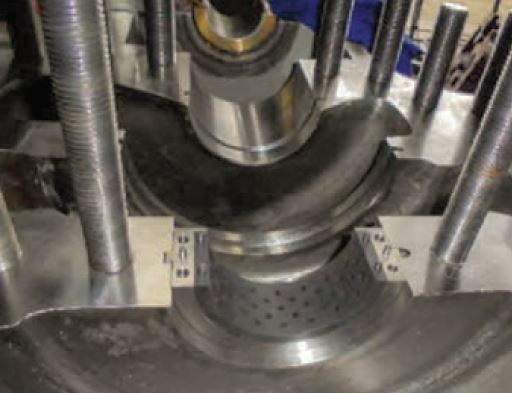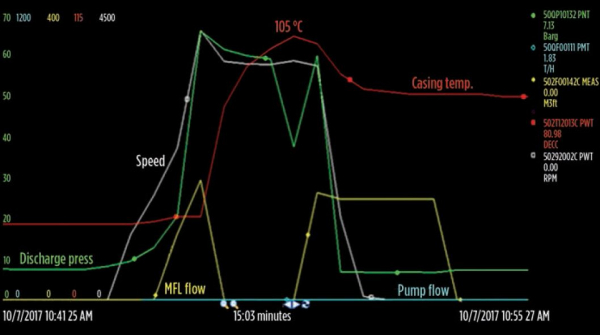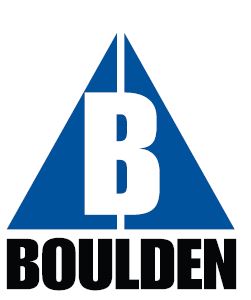- Boiler Feed Water Pumps I
- Boiler Feed Water Pumps II
- Amine Stripping Pumps
- LPG Pumps
- Improve Pump Reliability I
- Improve Pump Reliability II
- Diesel Charge Pumps
Request A Quote
Sign Up for Our Newsletter
Amine Stripping Pumps

Amine pumps upgraded for improved operations and reliability
A gas processing plant in Malaysia eliminated a source of expensive failures in its acid gas removal unit
(AGRU). The amine recirculation pumps had suffered from periodic pump seizures, causing operational
difficulties and significant damage to the machines. To address the issue, the pump wear components
were upgraded to an advanced composite material and innovative design. This upgrade has resulted in
improved operability and reliability for these extremely important machines.
The AGRU is the heart of the ethane recovery production at the plant. It removes carbon dioxide (CO ) and hydrogen sulfide (H S) from the feed gas stream. The gas is fed into the gas absorber, where a reaction occurs with methyl diethanolamine (MDEA), removing the CO from the feed gas.
The MDEA is fed into the reaction by five amine recirculation pumps—three running, with two full-capacity spares. The pumps are 2.7 MW (3,600 hp), two-stage axially split casing, API 610 between bearing BB1 design, running at 4,500 rpm. Differential pressure across the pumps is 64 barg (928 psi), and the
flowrate is 1,000 m /hr (4,400 gpm).

Starting the Pump
One challenge in starting a pump of this size is that it must always operate above the design minimum flowrate. At insufficient flowrates, the energy input into the pump will be converted into heat, rapidly creating the potential for premature failure and significant damage to the machine.
The amine circulation pumps are controlled to gradually ramp up to operating speed. During this ramp-up period, the pumps produce insufficient head to generate any flow into the gas absorber. Therefore, the pumps must run on a minimum flow bypass back to the suction header. This flow is controlled by a minimum flow line valve (MFLV), which should be opened before startup and then closed once full-speed operation of the pumps is established.
With a steam turbine driver, ramping up to 4,500 rpm requires approximately 15 min, which is far too long to run the pump at zero flow.
Periodically over the past 10 yr, the MFLV has been opened too late during the startup procedure, which has led to the pump seizing at the center bushing and non-drive-end (NDE) and drive-end (DE) throat bushings (FIG. 1). These components have the tightest clearance and are, therefore, the first metal-to-metal contact points inside the pump.
Searching for a better solution.
Incorrect adherence to the startup procedure was identified as the root cause of failure
during the investigation of these failures. This was addressed with training of relevant personnel and improvements in communication.
Beyond these improvements, a further upgrade was implemented to make the pump more robust and resistant to damage. This secondary upgrade involved upgrading the center, NDE and DE throat bushings with a proprietary composite material, which is a dimensionally stable, nonseizing and non-galling, low-friction composite material manufactured from perfluoroalkoxy (PFA) and longoriented carbon fibers. Although it is possible to reduce component clearance using this material (because the primary motivation was to eliminate pump seizures), the plant elected to use the original design clearance.
The upgrade also implemented a new design for the composite wear component. This technology is a patented design that uses a pattern of holes drilled through the composite insert, creating beneficial hydraulic effects during the operation of the pump, such as lower leakage across the component and increased hydraulic damping (FIG. 2).
The upgrade delivers.
While the operation of the pumps has improved, human error remains a possibility. After the first pump was upgraded, the MFLV was opened too late during the startup procedure. FIG. 3 shows this sequence of events with the (grey) speed line and (green) discharge pressure line rising before the (yellow) MFLV flow line begins to rise. The casing temperature rose to 105°C (220°F) and the pump was stopped after 15 min due to low flow. Based on experience from previous events, without the upgrade to composite wear parts, the pump would have seized and required a complete overhaul.
With the upgrade to the proprietary composite material, the pump did not seize. After it had cooled back to ambient temperature, the rotor was still able to turn freely. The pump was subsequently restarted, with the MFLV opened, and the
pump returned to successful operation (FIG. 4). The upgraded pump has now been operating for more than a year without issue.
Lower vibration. One of the proposed benefits of the composite wear component design is the potential for lower vibration. While this was not a primary motivation for the upgrade, lower vibration on a high-energy machine generally translates to longer component life and greater reliability.
For this pump, the data showed an overall vibration reduction of nearly 50%. (FIG. 5) shows the overall vibration readings, while (FIG. 6) shows the orbit plots of the vibration before and after the upgrade.
Since the clearance at the components was not changed and the pump was otherwise overhauled to the original design, it appears that this improvement is a result of the composite wear component design.
Further improvements. An ongoing project is to achieve the plant objective of a flawless startup procedure, requiring that the MFLV be open to start the pump. Until that project is completed, the upgrade to composite wear parts will help protect the machines from any potential adverse conditions. To further upgrade the pump, two additional changes can be considered. The case wear rings can also be upgraded to the proprietary composite material and the composite wear component design.
This will eliminate all metal-to-metal contact points in the machine, essentially eliminating any potential risk of seizure in the future. Because the risk of pump seizure will be minimized, the running clearance can also be reduced, thereby increasing the efficiency of the pump and reducing the operating cost. These options are under consideration for future repairs of these machines.
Takeaway
The objective of the plant is to achieve flawless, mistake-proof startup procedures and operation. What this experience has shown, however, is that advanced composite materials allow us to design the pump to be more robust and resistant to any adverse conditions that may arise. Furthermore, given the vibration performance with the composite wear component design, potential exists to explore further machinery reliability and efficiency improvements for many pumps within the plant.

